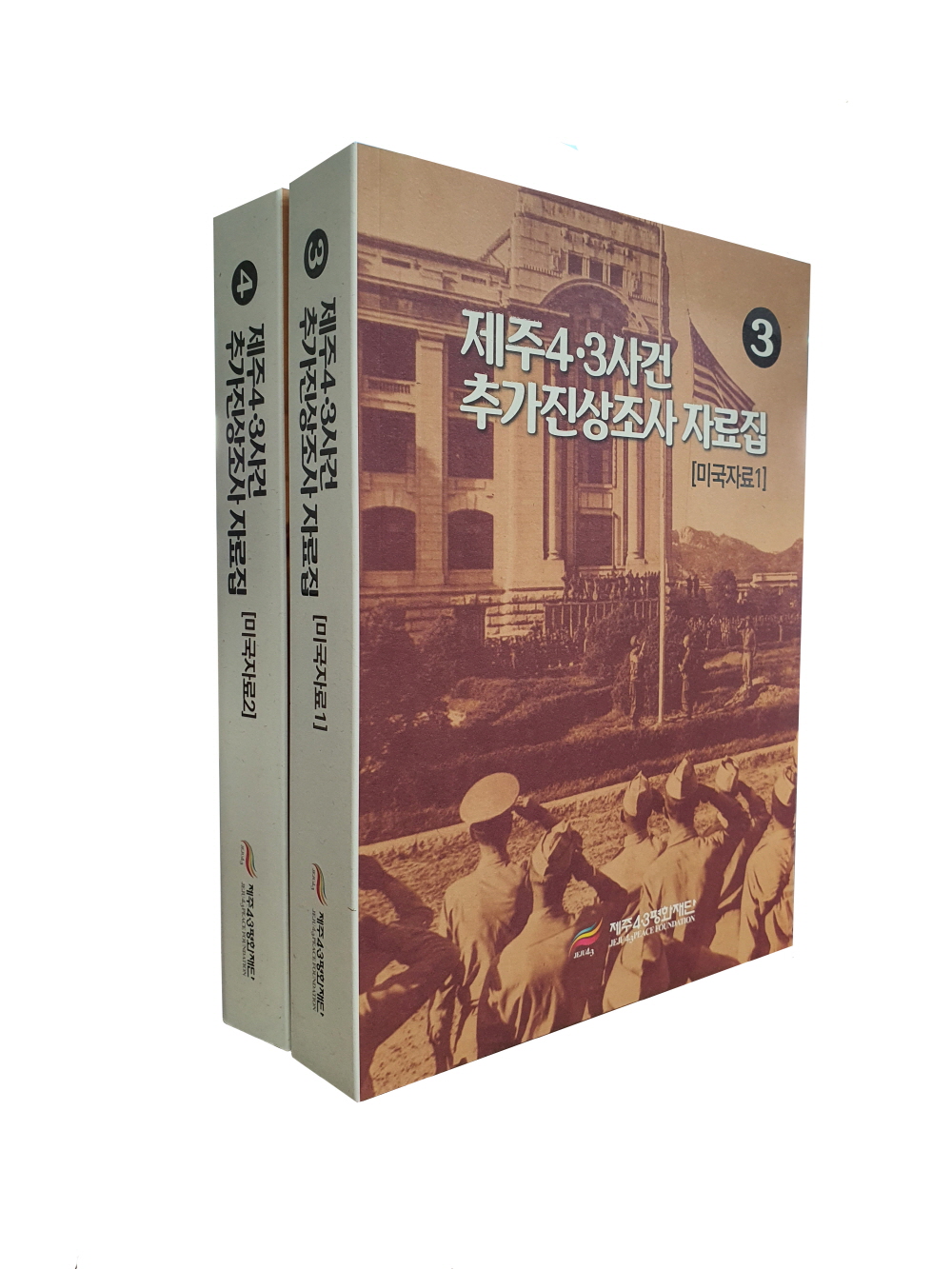Jeju 4·3 Incident Follow-up Investigations Report – U.S. Volumes I and II published

– Photo copies and translation included to describe the period from the liberation of Korea to the dawn of Jeju 4·3
– Third U.S. volume concerning the period after Jeju 4·3 to be published within the first half of the year
– Perspectives of the U.S. Military leadership on the Korean Peninsula and Jeju confirmed
Two volumes of U.S. sourcebook material were published that provide a quick look at the occupation policy of the United States Army Military Government in Korea (USAMGIK) from the stationing of the U.S. Forces in September 1945 until the outbreak of Jeju 4·3 in April 1948.
The Jeju 4·3 Peace Foundation (Director: Yang Jo-hoon) announced on March 23 that it published the U.S. Volumes I and II consisting of additional investigation reports on Jeju 4·3.
The sourcebook volumes published were the result of the foundation’s U.S. investigation project that was first undertaken by the Jeju 4·3 Central Committee in 2003.
The foundation dispatched an investigation team, led by the research department that was established in 2018, to the United States National Archives Records Administration (NARA). Since 2019, the team collected approximately 38,500 document pages related to Jeju 4·3 produced not only by the USAMGIK and the Korean Military Advisory Group (KMAG) but also by the upper echelons of the U.S. Forces in Korea including Far East Command (FEC) and the Supreme Command for the Allied Powers (SCAP).
Among the vast amount of collected data, 4,200 pages were translated. The two volumes recently published are about 1,190 pages (Volume I is 605 pages and Volume II is 582 pages), which cover the period from the occupation message of military governor John Reed Hodge immediately after Korea’s liberation to April 2, 1948, the night before Jeju 4·3 and prior to South Korea’s first general election on May 10, 1948. Within the first half of this year, the Jeju 4·3 Peace Foundation plans to publish three more volumes that include the records of killings produced by the USAMGIK and KMAG as well as the outbreak of Jeju 4·3 and the events that followed.
The content of the published material is arranged in chronological order to help with understanding the connections between each event. Contained within the volumes are not only the perspectives of the USAMGIK and the KMAG concerning the Korean Peninsula and Jeju but also records from RG554, a collection of documents produced by higher directorates such as FEC, SCAP, and the United Nations Command (UNC) to help understand domestic and international political circumstances, especially between the United States and Soviet Union. The most representative cases included would be the lengthy dialogues between the U.S. envoy led by Lieutenant General Albert Coady Wedemeyer, army chief of plans and operations, and Lieutenant General John Reed Hodge, the military governor of the USAMGIK, that took place on Aug. 20, 1947. General Hodge confessed in the dialogue that the USAMGIK entered Korea without any preparations. He also said the division of Joseon by an American officer, a few days prior to Japan’s surrender, was difficult to accept as the 38th parallel was a mere line on a map. He continued that it was not a desirable decision to utilize Joseon nationals who used to work as Japanese police, but the situation could come under control by doing so. He also commented on the local police stating they were mostly nationalistic and that they performed their duties well except for committing the occasional cruel deeds.
About the March 1 Independence Movement Day Ceremony in 1947, the sourcebook records that the turmoil occurred in eight regions across South Korea. It says there were 19 dead and 150 wounded civilians while only three policemen were wounded.
About the gunfire in Jeju on March 1, 1947, which gave rise to Jeju 4·3, the USAMGIK Staff of Intelligence distorted the cause of the event, recording that at 10 a.m., a rioter who is assumed to be a leftist attacked the Jeju Police Station building.
The published volumes are appreciated to have admissibility of evidence for accurate citation in accordance with the records classification system of NARA.
The data will be distributed among major institutes and academia at home and abroad. Online access is granted upon the general public at Jeju 4‧3 Archive (http://www.43archives.or.kr/).
In 2018, Jeju 4·3 Peace Foundation published the first and second additional investigation reports that respectively cover the police department and education sector. The foundation says it will continue to publish all five of the U.S. Volumes and another investigation report that concerns damage dealt to rural areas.